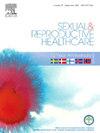Birth Control use in People who had an Abortion in the Southeast Region of the United States
IF 1.7
3区 医学
Q3 PUBLIC, ENVIRONMENTAL & OCCUPATIONAL HEALTH
引用次数: 0
Abstract
Objective
To examine non-use of birth control among people who sought an abortion in the Southeast region. Access to birth control continues to be rife with barriers. There have been many studies that have examined unintended pregnancies and birth control use, but none have studied non-use among people who sought an abortion. Post the Dobbs decision, it is imperative to understand these risk factors.
Study Design
The self-administered survey was given to all patients presenting for abortion and consented to complete the survey while at the clinic or facility before their abortion. This study examined factors associated with non-use of birth control in people who had an abortion.
Results
Overall, 50.2% (n = 1,222) of people presenting for abortion reported using a birth control method. Multivariate analysis showed that white people were 1.4 (95% CI: 1.2, 1.7) times more likely to use birth control compared to Black people. People with a bachelor’s degree or higher were 1.8 (95% CI: 1.3, 2.5) times more likely to use birth control, compared to people without high school diploma. Those 200% or above the federal poverty line were 1.3 (95% CI: 1.1, 1.6) times more likely to use birth control compared to those below the federal poverty line.
Conclusion
This study showed the lack of use of birth control in some populations, highlighting the need for better awareness of and access to birth control and improved education on options for birth control. Policies that promote equitable access to health education and care, and effective options for preventing unintended pregnancy are imperative.
美国东南部地区堕胎患者的节育措施使用情况
目的调查东南地区寻求人工流产的人群中未使用节育措施的情况。获得生育控制仍然充满障碍。有许多研究调查了意外怀孕和避孕措施的使用情况,但没有一项研究调查了寻求堕胎的人不使用避孕措施的情况。在Dobbs的决定之后,了解这些风险因素是非常必要的。研究设计:对所有前来堕胎的患者进行自我管理的调查,并同意在堕胎前在诊所或设施完成调查。这项研究调查了流产患者未使用节育措施的相关因素。结果总体而言,50.2% (n = 1,222)的人流报告使用了节育方法。多变量分析显示,白人使用节育措施的可能性是黑人的1.4倍(95% CI: 1.2, 1.7)。与没有高中文凭的人相比,拥有学士学位或更高学位的人采取避孕措施的可能性是1.8倍(95% CI: 1.3, 2.5)。与低于联邦贫困线的人相比,那些在联邦贫困线以上200%的人使用节育措施的可能性要高1.3倍(95% CI: 1.1, 1.6)。结论本研究显示,部分人群缺乏节育措施的使用,突出了提高节育意识和获得节育措施的必要性,以及加强节育选择教育的必要性。促进公平获得卫生教育和保健的政策以及预防意外怀孕的有效选择是必不可少的。
本文章由计算机程序翻译,如有差异,请以英文原文为准。
求助全文
约1分钟内获得全文
求助全文
来源期刊

Sexual & Reproductive Healthcare
PUBLIC, ENVIRONMENTAL & OCCUPATIONAL HEALTH-
CiteScore
2.70
自引率
5.60%
发文量
73
审稿时长
45 days
 求助内容:
求助内容: 应助结果提醒方式:
应助结果提醒方式:


